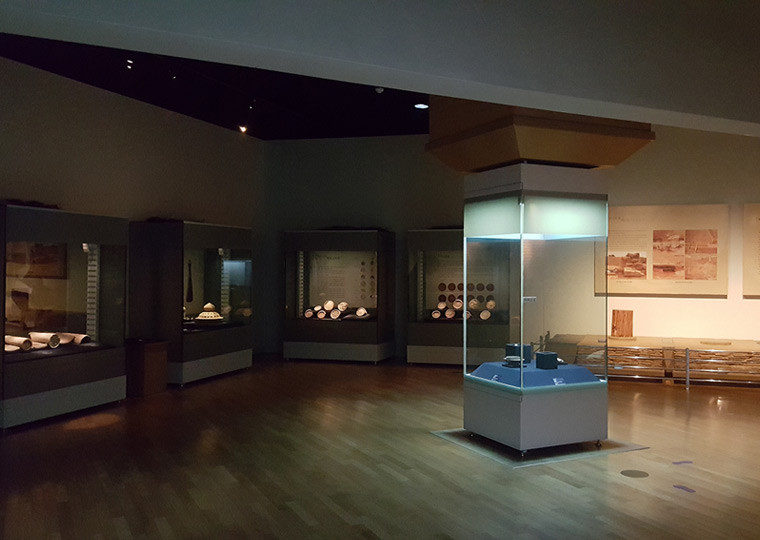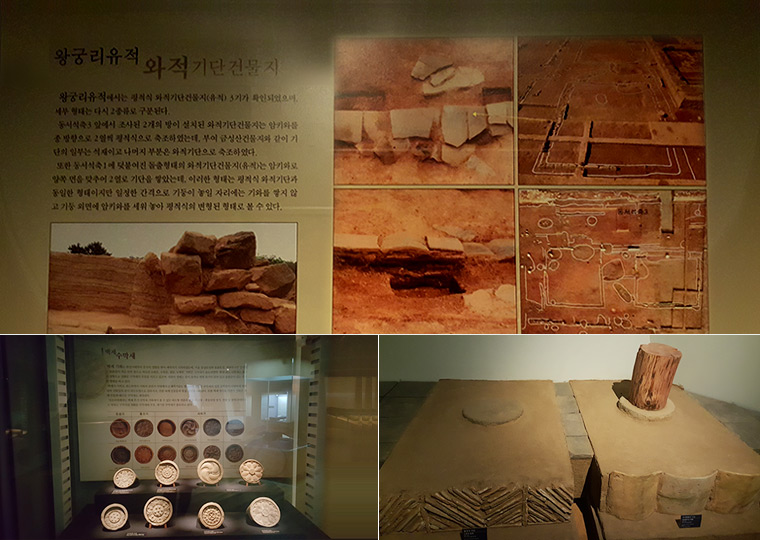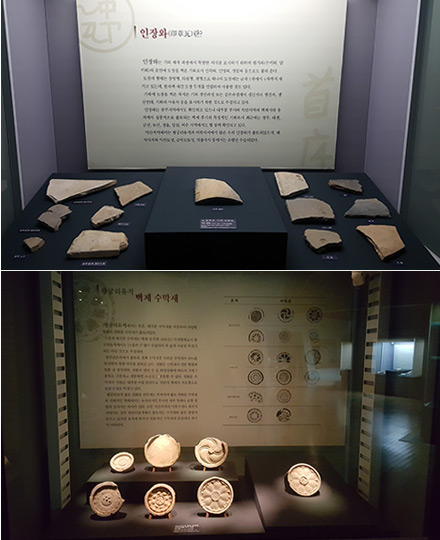Baekje Buildings on the Archaeological Site in Wanggung-ri
The Wanggung-ri Site Museum is configured in five themes. Viewing the exhibitions in sequence is recommended.
Select any exhibition hall in Wanggung-ri Site Museum and the details regarding the exhibition hall are displayed.

② Baekje Buildings on the Archaeological Site in Wanggung-ri
- A total of 22 building sites have been found at the Archaeological Site in Wanggung-ri up to the present: 15 building sites of the Baekje period, 6 buildings sites of the Unified Silla and 1 building site of the Goryeo period. At the Baekje building sites, buildings with stone masonry foundation and those with foundation made with roof tiles were identified depending on the construction materials for the foundation. The buildings were classified into the stylobate building and pile building depending on the presence of a stylobate, and filing timber building and earth banking and filing timber building depending on the filing timber method. Wall-supported buildings with only a main pole and sub pole without a foundation have been found.
- While the major building sites may include mainly stylobate buildings using a foundation, the earth banking and filing timber building site, building site with a foundation using roof tiles and pile building site were identified like the building site of Hall of Rectitude. The building site of the Hall of Rectitude is on the same line as the central axis of the inner gate. It was identified that most other buildings were mainly on the east except Geumdangji and Gangdangji because the buildings were demolished in the process of change from buildings to temples.
- The building site of the Hall of Rectitude is the first building after passing through the inner gate in the Archaeological Site in Wanggung-ri and is the largest building in the site. Tiles inscribing the name of the capital were found and the unique foundation method using soil-dept filing timber was identified. Moreover, it is estimated that the building was used as the Hall of Rectitude for performing important rituals or events of state because of the broad space (yard) in front of the building, unlike other buildings.




